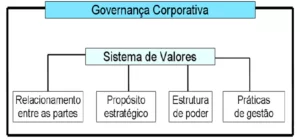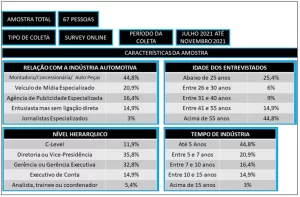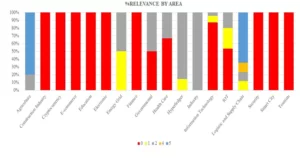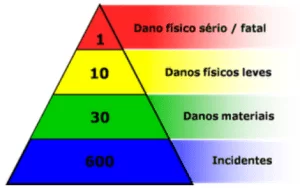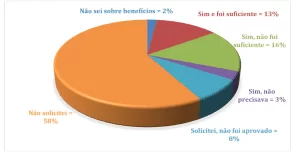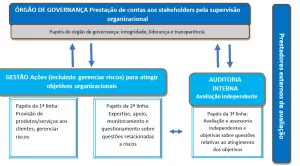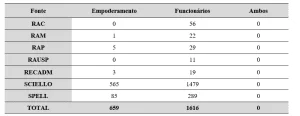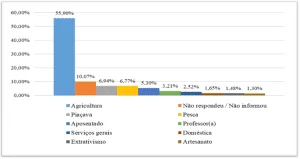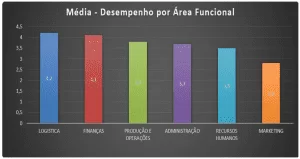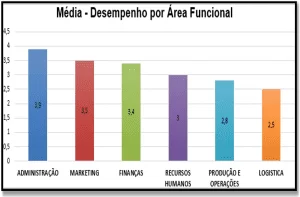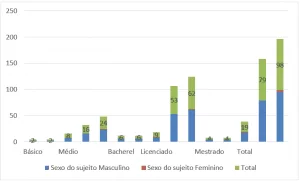ORIGINAL ARTICLE
OLIVEIRA, Felipe Gabriel Barbosa de [1]
OLIVEIRA, Felipe Gabriel Barbosa de. Consumer behavior: the factors of influence. Revista Científica Multidisciplinar Núcleo do Conhecimento. Year 01. Ed. 10. Vol. 09. pp. 613-630, October/November 2016. ISSN: 2448-0959, Access Link: https://www.nucleodoconhecimento.com.br/business-administration/factors-of-influence
ABSTRACT
Today globalization has accelerated the movement of people, products, ideas and services, disrupting social and geographical borders. The evolution of technology is creating a new economy, where the old laws no longer applied, forcing everyone to change the way we behave like consumers. Shaping a new era in terms of size, speed and directional flow, the economic shift of wealth today is in progress, is unprecedented in modern history. This change I think we saw it coming, but it was quite a shock when she arrived, and in your vacuum there are more surprises that continuity, and the target audience is the entire population around the world. Currently, impacted and identified with the name of crisis. So, more and more people want to have a minimum of better condition of life and consumption. All this is in orbit about drive consumer behavior, this interference is our focus. We present a study of what are the factors that influence consumer behavior, adopting the method of bibliographical research, electing authors, with theories in the segment, the most relevance and reference in the world today. Studying each of the factors, cultural, social, psychological and personal, we can give us to understand, what influences and moves, consumer behavior.
Keywords: Influence; Behavior; Consumer; Marketing.
INTRODUCTION
Today is of extreme relevance to meet, study and constantly monitor the behavior of consumers, because, with this concern, marketers and business managers can detect opportunities and threats to its business with the possible dissatisfaction or refusal of their customers.
In the detailed analysis of individual consumer behaviors, you can target the best strategies to launch a product, add services, innovate, stand, get markets, or the best form of attack in the disclosure of a product or service, so that with it, no matter the relationship giving meaning to the work of marketing professionals, featuring the exchange between company and customers in order to meet the needs of both.
To survive, we need to innovate, and to innovate you need to know the consumer. Therefore, companies must get its competitiveness from the study of consumer behavior to continue existing.
This article sets out in addition to the factors that influence and interfere in the behaviour of consumers, the variables of each factor, to make visible the likelihood of using the same to motivate, delight and to retain customers in order to increase profitability in the corporate budget and the height of satisfaction through consumers.
THE FACTORS THAT INFLUENCE CONSUMER BEHAVIOR
The area of consumer behavior emerged in the years 1960. The goal was to develop marketing strategies that obtain positive results. Was a need for businesses to understand the attitudes and behaviors of consumer purchase.
And these days, more than ever, studying consumer behavior is when companies perceive opportunities to satisfy the demands of its customers. Who is, however, that consumer? Why he behaves in a certain way on certain occasions and differently in other? Why he remains a mystery to many entrepreneurs and marketing strategists (KARSAKLIAN, 2008). Research and analysis of consumer behavior are understood as the “study of the processes involved when individuals or group select, buy, use or offer products, services, ideas or experiences to satisfy needs and wants” (Solomon, 2002, p. 24).
So you can expand your understanding of the subject, as some of the leading theorists of marketing define the theme.
For Mowen and Minor (2003), consumer behavior is the study of purchasing units and trading processes involved in the acquisition, use and disposal of goods, services, experiences and ideas.
According to Engel, Blackwell and Miniard (2000), consumer behavior includes activities that people engage when they obtain and consume products and services. The study is to understand the process of choosing between the various existing brands.
According to Kotler (2000), it is to study how individuals, groups and organizations select, buy, use and dispose of products to meet your needs and your desires.
Karsaklian (2004), notes that the consumer is provided with personality and, for this reason, each person identifies and understands the world in various ways (perception), reacting automatically to the context through the senses.
In short, according to the statement of rock and Christensen (1999), the marketer must lean on the behavioral sciences to understand consumers and their behavior.
The marketing, to Kotler (2000), search basically meet the needs and desires of consumers. However, the author highlights that make only this is not enough for a company to survive in a competitive market. The challenge is to understand customers and their consumer behaviors, namely: know how does the purchasing process, to develop strategies that influence decision-making, through the creation of differentials (Goldstein; Almeida, 2000).
In this context, Kotler and Armstrong (1993), highlight the key factors that influence consumer decision making: the motivations, personality and perceptions:
Motivation-the person needs all the more reason to get your satisfaction, that can be the meeting physiological needs, such as Hunger, cold, thirst and sleep, or psychological, in recognition, self-esteem etc.
Personality-there are psychological characteristics that determine the behavior of the individual at the time of purchase.
Perceptions-the client interprets specific manner the information that help make the decision at the time of purchase.
Besides these aspects, we find authors who claim that consumers are influenced by several variables at the time of purchase:
Churchill Junior and Peter (2003), the variables are: social, cultural, situational, personal marketing, among others.
For Engel, Blackwell and Miniard (2000), these variables would be divided between the environmental influences, individual differences and personal factors.
To Schiffman and Kanuk (2000), the influences can be psychological, personal, social and cultural rights.
As we study the present stimuli in the environment, it is necessary to consider the influences. Such evidence should be considered and for this purpose, we have chosen the following factors that exert influences on consumer behavior.
CULTURAL FACTORS
Culture is one of the most important influences of society on individuals. Boone and Kutrtz (1998, p. 168) defines it as “a set of values, beliefs, preferences and tastes are passed from one generation to another”. And here are included products and services in the category of material values.
Because it is a vital element in the life of an individual in society, numerous failures in marketing have as direct consequence the lack of sensitivity, not to take into consideration the cultural reality in which they find themselves placed consumers (pine, CASTRO, SILVA, NANI, 2006).
Let’s see what we’re talking about the reasons that make you prefer a particular product, brand, or service over another.
And one of the things that influence this decision is to understand that the products have attributes, tangible or intangible, which, after its consumption, generate some functional or psychological consequences important to satisfy values, classified in terminals or instrumentals. But, to better understand these values, let’s see the definitions of Gastaldello (1999):
Instrumental values-are modes of behavior or conduct (half values), such as honesty, responsibility and intelligence. They lead to the terminal values.
Terminal values-final States of existence (end values), as freedom and happiness.
The cultural values that express collective beliefs – are transferred to the products by means of propaganda and advertising. These products, in turn, end up being consumed by the target audience, with the goal of building a positive social identity to satisfy their need to belong to a social group.
The more a product or brand to raise the image of the individual vis-à-vis social group, this will be interested by such brand or product. Customers, i.e. consumers, according to Fisk (2008, p. 37), “are looking for brands (and companies, products and people represented by them) that they can trust and cling, in a rapidly changing world, confusing and intimidating”. This is a typical example of consumer behavior based on cultural values, that is, beliefs. As the values have a cultural dimension, they provide individuals the opportunity to be part of a specific society (KARSAKLIAN, 2008).
In a society, the dominant cultural values are “served” by the institutions, as the laws, family, religion or education, that give them formal expression mode, tangible and more easily accessible. So, learning the responsibility is primarily for school and family (KARSAKLIAN, 2008).
According to Dubois (1994), the first, and main obstacle may found in the study of cultural phenomena is the ambiguity that surrounds the concept of culture itself. In a work of reference, Kroeber and Kluckhohn (1994), two American anthropologists, collected, analyzed and compared 164 settings … Unable to resist the temptation to suggest another. Adopt one of these definitions, which is the most frequently used, Tylor (1994): “complex, which includes knowledge, belief, art, law, moral customs and any other capabilities and habits acquired by man as a member of a society” (apud KARSAKLIAN, 2008).
SOCIAL FACTORS
Are the influences exerted by the social classes which allow the comparison between groups of people (Schiffman; Kanuk, 2000).
According to Souza, Farias and Nicoluci (2005), individuals receive direct influence of reference groups in different ways: being exposed to new behaviors and different lifestyles, receiving influences on the self-image and attitude and getting pressure on compliance in relation to social rules, factors that end up contributing to a preference for a particular service or product.
Well, motivations, perceptions and attitudes of consumers constitute a logical starting point, but insufficient to explain his behavior. Logical because purchase decisions are always facts linked to individuals. Insufficient, because they explain, first of all, preferences and intentions, but not necessarily the behavior that will follow (KARSAKLIAN, 2008).
The central concept of Sociology several definitions are assigned to social class. In its broadest sense, a social class is a relatively homogeneous and permanent division of a company, in which it is possible to classify individuals or families that share values, lifestyles, interests and consumer behavior (DUSSART, 1983 apud KARSAKLIAN, 2008).
PERSONAL FACTORS
Purchase decisions are also influenced by personal factors. These personal slant, such as age, occupation, economic circumstances, stage of life cycle, personality and self-image.
Age and stage in the life cycle
Over time, the needs of an individual change and hardly will always be the same. And consumption patterns are shaped according to the life cycle of the family. For Engel, Blackwell and Miniard (2000), there are nine stages in this cycle: 1. Singles – few commitments. 2. Newlyweds-young people without children. 3. Nest full l-children under the age of six. 4. Nest full ll-children over six years. 5. Full nest lll-mature couples with dependent children. 6. Empty nest l – mature couples, who work with children living away from home. 7. Empty nest ll-mature couples retired, with children living away from home. 8. Lone survivor who works. 9. Lone survivor. People of the third age, currently represent a growing consumer group, with purchasing power and willingness to consume. Solomon (2002) States that, as the population ages, your needs are going to be changing and it passes to seek more autonomy – active lives and self-reliance — and greater connection with your friends and your family.
Occupation and economic circumstances
The occupation and the economic circumstances of individuals define their purchasing power. According to the purchasing power and the desired status, it is possible to define the needs for specific products, such as suits for executives and footwear for workers. But companies also need to be aware of changes in the economy, because, in the midst of an economic crisis, for example, is reduced the consumption pattern of the family, with the Elimination of the superfluous and the purchase of essential products.
The consumption pattern of individuals, according to Kotler (2000), is influenced by the occupation engaged. Occupation groups with common interests have elements that determine their economic circumstances and that directly affect the choice of products. As examples of these elements, we have the disposable income, asset ownership or savings, debt capacity, credit conditions, among other things.
Personality and self-image
We know that every person has a way to act, think and like. These peculiarities are the personality, which makes each human being unique. Let’s see the conceptions of two authors:
Karsaklian (2004, p. 39) States that “personality is a reference to an attribute or characteristic of a person that causes some impression in others”.
Gade (1998) defines personality as the internal organisation of traits that determine attitudes and the way to play the social roles. Each individual creates his way of living and to see the world, what differentiates it from animals.
Personality refers to the psychological characteristics that differentiate people such as self-confidence, domain, autonomy, submission, sociability etc.
Already referring to self-image and personality, Kotler and Keller (2006, p. 193) Note that:
[…] When we use the term personality, we mean different psychological characteristics that lead to relatively consistent and continuous reactions in the environment. The personality is usually described in terms of characteristics such as self-confidence, domain, autonomy, submission, sociability, endurance and adaptability. The personality can be a useful variable to analyze consumer behavior, since the personality types can be classified accurately and that there are strong correlations between certain personality types and the choices of products and brands.
LIFESTYLE
The style of life encompasses the activities, interests, and opinions of a person (Kotler, 2000). Is expressed, for example, by how individuals spend their money or their time.
PSYCHOLOGICAL FACTORS
To meet the consumer buying behavior, we must take into account the understanding of interference of psychological factors. According to analysis from Kotler (2000), these factors can be divided into: motivation, perception, learning, beliefs and attitudes. To give you an in-depth view of consumer behavior, it is critical to know how this occurs.
The motivation as psychological determinant
Karsaklian (2004, p. 23) States that “the basis of the reasons lies in the question of the psychological balance of the individual. The discovery of a need leads the individual to a situation of discomfort “. In this regard, Kotler (2000) adds that this situation of discomfort is nothing important enough to take the person to act.
It is in these companies needs focus. According to Karsaklian (2004, p. 36), “the motivation process begins with the detection of a need”. This idea is supported by Gade (1998, p. 86), for whom “the body becomes stimulated by internal or external requirements, which may be physiological or psychological”.
To understand this behavior were developed several approaches about the motivation, which can assist marketers in their activities. We present below some of the most important.
Maslow’s theory
We felt several needs, but we seek to satisfy first the ones that seems to be the most important. Maslow, quoted by Stephens (2003), States that the motivational behavior is a result of internal or external stimuli that Act on people. They awaken in them the desire, motivating them to satisfy you.
A must for Karsaklian (2004), ceases when is satisfied, and the individual demand, so the satisfaction of another shortage. And when a need not come from frustration, that State has consequences as nervousness, drop in self-esteem, aggressiveness and insomnia.
The model of learning or Pavlovian
The learning model – or Pavlovian-had its origin in the studies of Russian scientist Ivan Pavlov, whose experiment, how do you explain Kotler (1998), was to trigger a Bell before feeding a dog, after several repetitions, the scientist went on to induce salivation of the animal just to sound the Bell.
With this simple experiment, Pavlov found that learning is a voluntary process and developed a model in which this occurs depending on the conditioning to which the individual is submitted. This is stimulus-response model, which includes aspects such as motivation, stimulation, response and reinforcement. Let’s see its conclusions in this regard, as exposes Kotler (1998):
Motivation – is a strong internal stimulus that pushes the individual to action, such as hunger, thirst, sleep, sex and fear, among others.
Stimulus – is in the environment and in people and determines when, where and why the answers occur.
Reply-is the reaction to stimuli.
Reinforcement – is the stimulus to the repetition of a particular response.
This theory shows that it is possible to create demand for a product or service if the link to strong impulses through motivating suggestions, bolstering them positively.
The psychoanalytic model or Freudian
The psychoanalytic model, also called Freudian, has its origin in clinical psychology. According to this theory, “the psychological forces that shape the behavior of people are basically unaware and a person may not fully understand their motivations” (Kotler .2000, p. 194), in the context of this approach, Gade (1998) uses Segmund Freud’s theories to argue that personality is constituted of three psychological forces: the id, the ego and the superego, which determine the behavior of the individual.
These three forces can be defined as follows:
ID – is the source of energy of the instinctive drives, the search for pleasure,
Example: “I would drink all the wine cellar”. However, as the human being cannot externalize all your primitive desires to live in society, develops the superego.
Superego-with the function of a judge, it’s up to him the internal representation of the prohibitions and the values of society. Example: “I’m not supposed to drink all the wine cellar, the better one.”
Ego-is a system that seeks a balance between the impulses of the id and the prohibitions of the superego. Example: “I’m drinking a bottle of wine or maybe half a bottle”.
These three forces as Gade (1998), are also responsible for feelings of guilt at the time of purchase, which must be worked out by the responsible for marketing strategies.
According to Freud, the motivations which dictate the behavior of people are basically unaware and nobody could thoroughly understand their attitudes. Thus, all the characteristics of a brand influence the decision, because any one of them can stimulate certain emotions and associations.
The Freudian theory, as Gade (1998) declares, is widely used in the definition of the choice of the appeals to be made in the communication with the consumer. But for Freud’s theory really work, you need to detect the real consumer need to motivate you to choose a particular product.
The value model
If we make an analysis of the value model proposed by Kotler (1998), we must consider that it is based on the assumption that some people choose to buy from a company that delivered a product or service whose total value is greater than the total cost of the production itself. In this case, are included in the product or service valuation factors such as the values of the product, the service offered, and the image of the company, among others. For example:
Some consumers would pay more for a given product or service if it were associated with a social action, as environmental preservation.
There are still people who would pay more to have a car or cell phone.
The value, to Porter (1992), refers to the amount that the buyer is willing to pay for what a company gives, as the added value for the quality of a product, for example.
The perception as a psychological determinant
The perception is the way in which we can organize, interpret and select the information received to understand what is around us.
Not all the learning of the stimuli received from the environment, but also of the relationship between these and the Interior conditions of the person. To Sheth, Mittal and Newman (2001), the perception is “a process by which an individual selects, organizes and interprets the information it receives from the environment to create a meaningful picture of the world”.
Consumers as Nickels and Wood (1999), become aware of the outside world through the perception of what surrounds them. This process occurs for data capture, stimuli and sensations experienced through sensory organs: hearing, sight, smell, taste and touch.
The perception of clients such as explain Sheth, Mittal and Newman (2001), is relevant to all aspects of marketing communications. It influences the design of the product, the markings, packaging, merchandising, advertisements, among other aspects and factors.
We, consumers, as note of Sheth, Mittal and Newman (2001), do not acquire a product or service in itself, but for the benefits or values that this offers. The values in the vision of Zeithaml (1988, p. 14, our translation), are the “general consumer assessment of the usefulness of a product, based on perceptions of what is and what is given”.
According to the survey results of Blessa (2003, p. 29) regarding consumer perception, “learned” in the following proportions:
1% for the palate; 1.5% by touch; 3.5% by smell; 11% by hearing; 83% by sight.
These results show that the companies are using a lot of Visual Media, packaging, trademarks and design for conversations with consumers and attract attention, differentiating itself from the competition through these elements.
Learning how psychological determinant
We can say that learning, as Karsaklian (2004, p. 81), constitutes “a relatively durable behavior modification because of past experience. So she sets based on the result of the experience, regardless of all the innate tendencies, and includes the changes in attitudes, emotions and behaviors.
As Gade (1998), the majority of human behavior that is learned involves the use of goods and services.
All these variables together to individual attributes, are the factors that influence the buying behavior. Therefore, the study of consumer behavior must analyze all these forces in order to identify patterns of consumption, detect trends and possible changes in market segments.
2.1. METHODOLOGY
A bibliographical research in primary sources, aiming to collect data in appropriate publications and directed various authors, theorizing about the same subject. Seeking to justify the hypotheses.
As for bibliographical research, reproduces the quoted by DEER and BERVIAN:
The bibliographical research seeks to explain a problem from theoretical references published in documents. Can be performed independently or as part of the descriptive research or experimental. In both cases, seeking to know and analyze the cultural or scientific contributions of the past exist on a given subject, topic or issue (1983, p. 55).
From the start the need arises to update the theme; consumer behavior, which leads us to find answers to the problems formulated, which are the interference which influence cultural, social factors, psychological and personal. Find other denominations but influences factors that in theory, although they bring different IDs names, fall belonging to four original influences factors in issue, classified by the authors for us elected under reference analyses.
Consumer behavior has its theoretical foundation marked as an example; “Being a consumer is to be human. Being a consumer is to feed, dress up, have fun … is live. ” KARSAKLIAN (2000; p. 11).
Consumer behavior in our research we have achieved notable results. Being they represented through the interference of the cultural, social factors, psychological and personal. And the met searched way traditional, continuous observation, accompanied and monitored through the factors that influence. Well so we also know through effective technological tools, such as specific intelligence software behavior which reap all the trail left by consumers, registering all the history of consumer behavior, when the purchase effected physically, as well as by means of e-commerce, that every day has been gaining space as a majority trend of modus operandi, on purchases in the near future. Yes, nothing escapes in their records. Through an integrated management system, Executive Panel in real time, all the information now logged on the behavior of consumers, obtained by these instruments, and the secret of all this information is always understand them to then find out effectively what to do with them. Thus making always valid and updated the data collected from our research.
FINAL CONSIDERATIONS
Consumer behavior is full cultural, social factors, psychological and personal, and are constantly influencing consumers to change their spending habits. As more organizations understand the behavior of consumers, more will increase your sales. A consumer can buy, use and/or disposal of a product, but these functions can also be performed by different people, what happens in many purchasing decisions.
Cultural factors met the influence of society on individuals, a set of values, beliefs, preferences and tastes are passed from one generation to another, including products and services in the category of material values. And these dominant cultural values are provided by the institutions, as the laws, family, religion or education. Learning the responsibility is primarily by the school and the family. Social factors are the influences exerted by social classes, using as a criterion of ordering some indicators, such as profession and purchasing power, and, together with these indicators variables corresponding to the personal values, to influence groups such as family and friends, lifestyle and demographics. Social class we can classify individuals or families that share values, lifestyles, interests and consumer behavior. Personal factors, we saw that their buying decisions are influenced by personal factors, such as age, occupation, economic circumstances, stage of life cycle, personality and self-image. Psychological factors already the consumer buying behavior takes into account psychological factors and interference can be divided into: motivation, perception, learning, beliefs and attitudes. All these variables together to individual attributes, are the factors that influence the buying behavior.
The study of consumer behavior, especially, the factors that influence at first delights in understands them. And second, to engage in future demands a specific study especially on strategies of relationship, whether physically or virtually traditional in e-commerce environments; to see, judge and act for the benefit of both parties benefit with this understanding of complementary way. Then, for the elaboration and can win the waves of trends in this sea of consumer behavioral diversity. And here is the opening to that other scholars add their valuable contributions to this subject so fascinating which is why everything, which is consumer behavior. Because all turns, everything is always changing.
REFERENCES
SIMPLY, Darci; Marchesini, Fernando R. A; Oliveira, José A. F.; Sá, Luiz Carlos s. Fundamentals of Marketing. 7th. Ed. Rio de Janeiro: Editora FGV, 2006.
BLESSA, r. Merchandising at the point of sale. São Paulo: Atlas, 2003.
BOONE, I. E.; KURTZ, d. l. Contemporary Marketing. Rio de Janeiro? LTC, 1998.
DEER, Arnaldo l. & BERVIAN, Pedro a. Scientific Methodology: for use of University students. 3. ed. New York: McGraw-Hill, 1997.
CHURCHILOR JUNIOR, G. A.; PETER, j. p. Marketing: creating value for customers. São Paulo: Saraiva, 2003.
DUBOIS, B. The cultural aproach to the study of diffusion and adoption of innovation. In: Comprendre le consommateur. Paris: Dalloz, 1994. In; KARSAKLIAN, Eliane. Consumer behavior. 2nd. Ed., 3rd. Reimp., São Paulo: Atlas, 2008. P. 101-103, 154 and 157, 212.
DUSSART, Comportement du consommateur et c. stratégie marketing. New York: MacGraw-Hill, 1983. In: KARSAKLIAN, Eliane. Consumer behavior. 2nd. Ed., 3rd. Reimp., São Paulo: Atlas, 2008. P. 119.
ENGEL, J. F.; BLACKWELL, R. D.; MINIARD, p. w. consumer behavior. Rio de Janeiro: LTC, 2000.
FISK, ER. The marketing genius. Porto Alegre: Atemed, 2008.
GADE. C. Consumer Psychology is the propaganda. São Paulo: EPU, 1998.
GASTALDELLO, A. T. The influence of personal values of Brazilian and Argentine executives in commercial negotiations 99152 f. Dissertation (master in business administration) – Federal University of Rio Grande do Sul, Porto Alegre, 1999.
GOLDSTEIN, M.; ALMEIDA, h. s. Critique of integrative models of consumer behavior. Administration magazine-Rausp, Sao Paulo, v. 35, n. 1, p. 2-4./mar. 2000.
KARSAKLIAN, Eliane. Consumer behavior. São Paulo: Atlas, 2000.
KARSAKLIAN, and consumer behavior. 2. Ed. São Paulo: Atlas, 2004.
KARSAKLIAN, Eliane. Consumer behavior. 2. Ed., 3rd reimp., São Paulo: Atlas, 2008.
KOTLER, P.; ARMSTRONG, g. principles of marketing. Rio de Janeiro – Brazil’s Hall, 1993.
KOTLER, Philip; KELLER, Kevin Lane. Marketing Administration. 12 Ed. New York: Pearson Prentice Hall, 2006.
KOTLER, P.; Marketing management: analysis, planning, implementation and control. 5. Ed. São Paulo: Atlas, 1998.
Marketing management: the issue of the new millennium. São Paulo: Prentice-Hall, 2000.
KROEBER, A.; KLUCKHOHN, c. Culture: a critical review of concepts and definitions. In DUBOIS, b. Comprendre le consommateur. Paris: Dalloz, 1994. In: KARSAKLIAN, Eliane. Consumer behavior. 2nd. Ed., 3rd reimp., São Paulo: Atlas, 2008. P. 154.
LEVITT, T. The marketing myopia. In: the marketing imagination. São Paulo: Atlas, 1985. In: PATEL, Robert M.; CASTRO, William C.; SILVA, Helder H.;
MOWEN, J. C.; MINOR, M. S. Consumer behavior. São Paulo: Prentice-Hall, 2003.
NICKELS, W.G.; WOOD, m. b.: Relationship Marketing, quality, value. Rio de Janeiro: LTC, 1999.
Nunes, José Mauro g. consumer behavior and market research. 3rd. Ed., Rio de Janeiro: Editora FGV, 2006.
PATEL, Robert M.; CASTRO, William C.; SILVA, Helder H.; Nunes, José Mauro g. consumer behavior and market research. 3rd. Ed., Rio de Janeiro: Editora FGV, 2006.
PORTER, m. competitive advantage: creating and sustaining superior performance. Rio de Janeiro: Campus, 1992.
ROCHA, A.; CRISTENSEN, c. Marketing: theory and practice in Brazil. São Paulo: Atla, 1999.
SCHIFFMAN, I. G.; KANUK, i. i. consumer behavior. 6 ed. Rio de Janeiro: LTC, 2000.
SHETH, J.N.; MITTAL, B.; NEWMAN, b. i. client behavior: going beyond consumer behavior: São Paulo: Atlas, 2001.
SOLOMON, M. R. Consumer behavior: buying possessing and being. Translation of Lene Belon Ribeiro. 5. Ed. New York: Bookman, 2002.
SHARMA, A. R. C. FARIAS, J. M. P; NICOLUCI, t. c. major factors that influence consumers to attend College night bars in the city of Presidente Prudente. 2005. Monograph (Bachelor’s degree in business administration). Faculty of Economic and Administrative Sciences of Presidente Prudente. Integrated school “Antonio Eufrasio de Toledo”. Presidente Prudente, 2005.
STEPHENS, d. c. (ed.) Business Journal of Maslow. Rio de Janeiro: Thorsons, 2003.
TYLOR, e. Primitive culture. In: DUBOIS, b. Comprendre le consommateur. Paris: Dalloz, 1994. In: KARSAKLIAN, Eliane. Consumer behavior.
2nd. Ed., 3rd reimp., São Paulo: Atlas, 2008.
ZEITHAML, v.a. Consumer perceptions of price. Quality and value: the means-end model and synthesis of evidence, Journal of Marketing, Chicago, v. 52, n. 3. p. 2-22, jul. 1988.
[1] Degree in business administration (UTFPR) and in personnel management (UNINTER).

